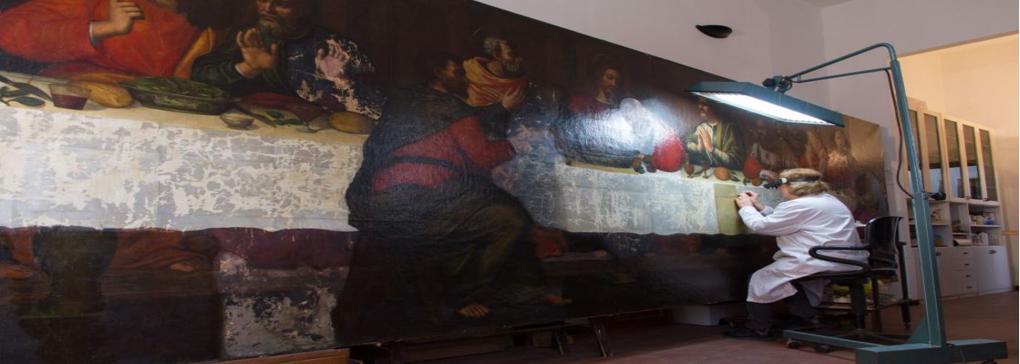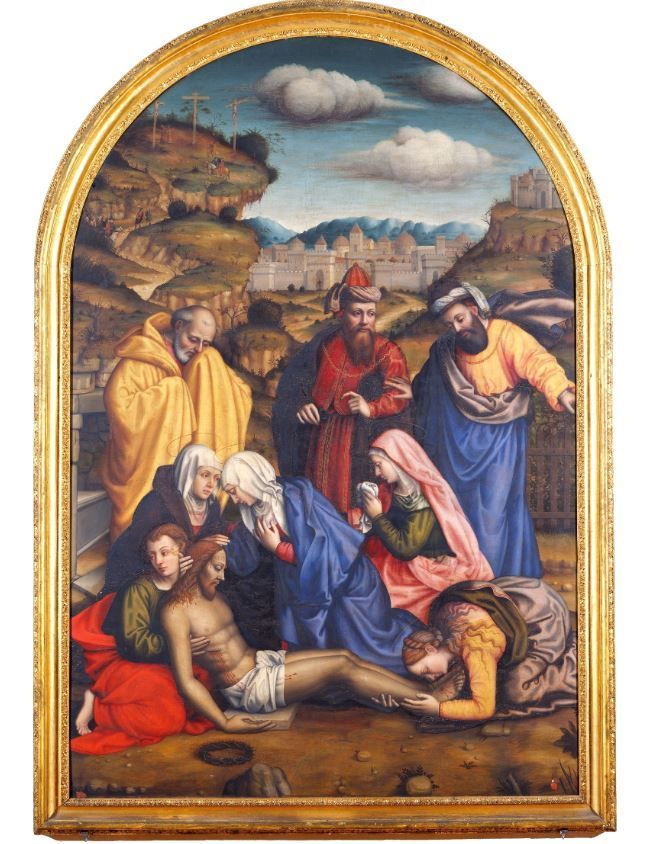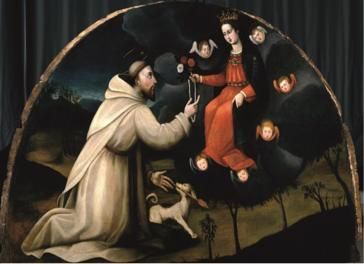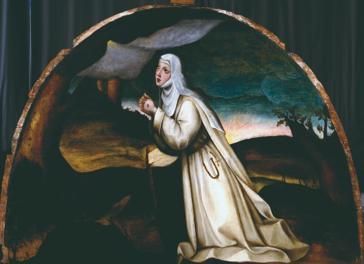Plautilla Nelli

As we learned yesterday Plautilla Nelli inspired Jane Fortune to fund the restoration of Tuscan unknown female artists, which led to the founding of Advancing Women Artists (AWA).
So, who was Plautilla Nelli? AWA was the obvious source for the answer:
Nelli worked in Florence in the 1500s and her large-scale devotional paintings are a precious ‘exception’ in history. A Renaissance convent-painter Nelli (1524-1588) was the first known female artist of Florence. A nun by age 14, Pulisena Margherita Nelli became Suor Plautilla when she entered the Dominican convent of Santa Caterina da Siena in 1538. Now demolished, it was located across from the San Marco monastery in Florence’s elegant Piazza San Marco.
The daughter of a merchant family, Nelli hobnobbed with prominent male painters of her day and was known for running a working studio within her convent. Nelli was one of the few female painters mentioned by Giorgio Vasari(^1) in his Lives of Artists and she was known to have inherited the drawings of Fra Bartolomeo, a prominent devotional painter who carried on the traditions of Fra Angelico(^2).
Vasari writes that ‘there were so many of her paintings in the houses of gentlemen in Florence, it would be tedious to mention them all.’ This piece of ‘historical trivia’ was one of the driving forces behind the foundation of AWA. At the time of restoring Lamentation with Saints in 2006, there were only three confirmed works to Nelli’s name. In recent years, scholars have uncovered various ground-breaking attributions, expanding Nelli’s oeuvre to some seventeen works.

Live woodworms were found in the wood panel and needed to be eliminated by inserting gas into bubble wrap that sealed the painting, before restoration could begin. It took one month to kill the woodworms. A laboratory analysis of the painting showed various layers, suggesting that Nelli's preparatory drawing might lie beneath the surface.
Restorers were able carry out tests using infrared reflectography. Other challenges in the restoration, in addition to the need for careful cleaning, stemmed from the fact that there were several areas where the painting’s pictorial layer had curled.

Saint Dominic receives the Rosary was a painting in a considerable state of despair when it was found in San Salvi’s storehouses. A large amount of repainting has been executed during a past restoration in an attempt to redress extensive loss of color.
Centuries of acidic pigeon droppings, had corroded the painting’s surface in many places. Saint Dominic, founder of Nelli’s Dominican Order, was known for his visions of the Virgin Mary who inspired him to promote the recitation of the Rosary.
The painting’s perspective suggests it was meant to be seen from very high up and her brushstrokes are executed in a way that have made art historians wonder if Nelli intended for this panel to look like a fresco.

Nelli and her school produced several Saint Catherine images, as the learned holy woman was patron of her convent. The San Salvi painting of Saint Catherine in Prayer is Florence’s largest work on this subject.
The painting was so damaged that the project curator, the Palatine Gallery’s Serena Padovani, initially doubted the potential effectiveness of the restoration. Happily, over the course of two years, Saint Catherine in Prayer was restored to its original dignity.
During the restoration process, conservator Rossella Lari noticed that the saint’s gaze was turned upwards, looking intently at the blackened clouds. Surely, there has to be a source of Divine Light hidden somewhere under all the paint and grime? The painting was cleaned for months to remove the dark patent a previous restorer had used to repaint the clouds. Finally, there among the slowly whitening clouds, a tiny strip of yellow light appeared, giving new meaning to the entire image.
To conclude today, here is a short video on Plautillo Nelli solo show at the Uffizi in 2017. Tomorrow we take a look at the works of Artemisia Gentileschi.
^1 Giorgio Vasari 30 July 1511 – 27 June 1574) was an Italian painter, architect, writer, and historian, most famous today for his book Lives of the Most Excellent Painters, Sculptors and Architects also known as The Lives which is considered the ideological foundation of art-historical writing.
^2 Fra Angelico (c. 1395 – 18 February, 1455) was an Italian painter of the Early Renaissance, described by Vasari in his The Lives as having "a rare and perfect talent". In 1982, Pope John Paul II proclaimed his beatification in recognition of the holiness of his life.
Tomorrow we start on a few of Caroline's favourite posts. First up the amazing Sheila Cruthers, an Australian art collector and a philanthropist of note.
And a very warm welcome to L.K. in Australia - our latest subscriber to the blog.
Credit:
1 Details from AdvancingWomenArtists.com
